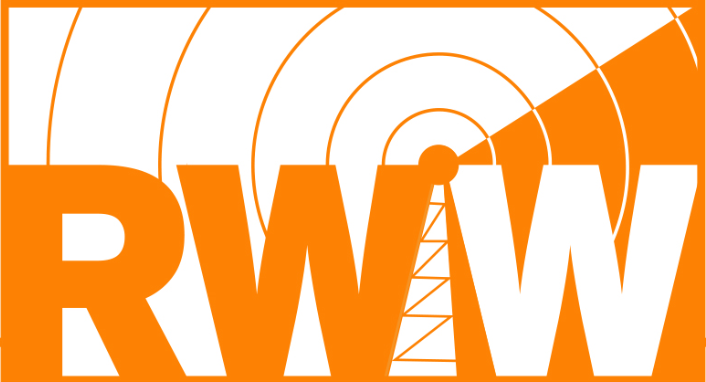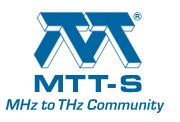Mobile Broadband Connectivity in 6G: What Needs to be Improved?
Date & Time: Tuesday, 18 January 2022, 13.30-15:30
Lecturer:
Prof. Emil Björnson, Linköping University, Sweden
Abstract:
The world is becoming increasingly digitalized and connected, and mobile broadband connectivity is the backbone of this development. The demand for capacity and expectations on service quality is constantly increasing, which calls for continuous technological evolution. The wireless technology is developed in cycles; a new generation is developed during each decade and then deployed during the next decade. The roll-out of 5G networks is happening as we speak; however, the research community has already shifted focus towards 6G, the sixth generation of mobile network technology. There is an abundance of visions and exciting new technologies being proposed, much more than can possibly make it into 6G. So what is most likely to happen?
In this short course, we will take a look at the wireless evolution and focus on mobile broadband applications, where the service quality is characterized by the data speed and traffic capacity. How is it improved in 5G? How much faster must wireless technology become and what are the most important bottlenecks? We will discuss which factors determine the data speed and how those factors might be improved in the future, including which new innovative solutions are on the drawing table. Lessons from the past will be combined with visions for the future, to determine what problems 6G must address and what the viable solutions are. The course will cover different multiplexing methods, multiple antenna technology, and the implications of using different frequency bands.
Course Syllabus:
The following topics will be covered:
- Fundamentals of cellular networks and mobile broadband
- 5G: From vision to reality
- Multiplexing methods: Time, frequency, and space
- Frequency bands: Implications, pros and cons
- 6G visions and goals for mobile broadband
- 6G enabling technologies for peak rates, uniform data rates, and massive multiplexing
Radio Transmitters and DPD-based Linearization: Fundamentals and Latest Advances
Date & Time: Wednesday, 19 January 2022, 13.30-15:10
Lecturers:
Prof. Mikko Valkama and Dr. Lauri Anttila, Tampere University, Finland
Abstract:
This short course aims to give an overview of the fundamentals and recent advances in radio transmitters and digital predistortion linearization. The first part of the course focuses on radio transmitters, in terms of fundamental operating principles and architectures, performance quantification, and latest advances. First, traditional radio transmitter principles such as the Cartesian, polar, and outphasing/LINC, as well as some of their extensions, are presented and reviewed. Switching transmitter principles are discussed, and the important class of time-based transmitters, which enables single-chip integration and power-efficient operation, is highlighted. We also describe the fundamentals of nonlinear distortion and its quantification in transmitters, as well as important transmitter quality metrics related to linearity and efficiency.
Digital predistortion (DPD) linearization is the second main topic of the course. The fundamentals of PA behavioral modeling are first reviewed, including AM/AM and AM/PM based, LUT based, and parametric models. DPD models based on polynomials, LUTs, and piecewise models, are introduced, along with parameter learning architectures and concepts. Finally, we discuss advanced topics such as multi-band DPD and DPD for MIMO/multi-antenna transmitters, in which the implementation and numerical complexity aspects are crucial due to the growing dimensions of the problem.
Course Syllabus:
The following topics will be covered:
Part 1: Radio Transmitters – Fundamentals and Latest Advances
- Basic radio transmitter requirements, bandwidth and multicarrier/multitechnology/multioperator perspectives
- Cartesian (I/Q) transmitter, polar transmitter, outphasing/LINC transmitter, and some extensions
- Switched-mode transmitters, Time-based transmitters
- Nonlinear distortion fundamentals and quantification – two-tone tests, P1dB, IIP, role of envelope/PAPR
- Quantifying transmitter performance – EVM, ACLR, spurious emissions, efficiency
Part 2: Digital Predistortion – Fundamentals and Latest Advances
- Nonlinear distortion behavioral models – AM/AM & AM/PM, LUT models, parametric models
- DPD basics – LUT-based and behavioral model-based solutions
- Basics of PA identification and DPD parameter learning
- More advanced DPD models and principles: piecewise DPD and multiband DPD
- DPD for MIMO/multiantenna transmitters
Wearable Systems and Antennas for Wireless Communication 5G, IOT and Medical Systems
Date & Time: Wednesday, 19 January 2022, 13.30-15:10
Lecturer:
Dr. Albert Sabban, Ort Braude College, Israel
Abstract:
Wearable systems and antennas are used in wireless Communication systems, wearable medical systems, IoT and 5G systems. Communication, medical and cellular industry is in continuous growth in the last few years. Low profile compact antennas are crucial in the development of Communication and Wearable systems.
Several small Passive and Active wearable systems and antennas will be presented in the course. Design considerations, computational results, and measured results on the human body of several compact wideband printed antennas with high efficiency will be presented in the course.
The course presents new concepts and designs of passive and active small antennas for Communication and Medical systems and applications such as sport systems, hiper LAN and GPS.
Course Syllabus:
The following topics will be covered:
- Wearable Systems and antenas
- Wearable Technologies
- New wideband wearable systems and antennas
- Passive and active wearable systems and antennas
- Passive and active Compact wearable antennas
- Antennas S11 Variation as Function of Distance from Body
- Tunable systems and antennas
- Applications of wearable systems and antennas
Microwave Sensing in the Modern Society
Date & Time: Wednesday, 19 January 2022, 15.40-17:20
Lecturer:
Kamel Haddadi, University of Lille, France
Abstract:
RF and microwave techniques and instrumentations have been widely described in the literature to address electrical or/and dielectric characterization of devices and materials. Thanks to its high potential, microwave nondestructive testing and evaluation (MNDT&E) has attracted industry in a wide range of sensing applications at different scales of dimensions. MNDT&E of materials is an important science that involves the development of RF and microwave instrumentations including sensors/probes, methods and calibration techniques to extract the quantities of interest from the measured signals, applications including detection of cracks, defects, dielectric homogeneities, characterization of complex permittivity. MNDT&E refers to alternating signals or electromagnetic waves in the frequency range 300 MHz – 300 GHz. The spatial resolution mainly governed by the wavelength of operation is theoretically limited by the diffraction limit, i.e. half free-space wavelength. Thanks to their penetrations in non-metallic materials, MNDT&E techniques have advantages over established NDT techniques.
The course is specifically aimed for beginners who intended to have a basic understanding of MNDT&E.
This course will review the foundations including wave to material interaction, microwave instrumentation, measurement methods and applications.
Course Syllabus:
The following topics will be covered:
- Review of Non Destructive Testing (NDT) Methods
- Fundamentals of Wave to Material interaction
- RF and Microwave instrumentation for MNDT&E applications
- The Six-Port concept for low-cost MNDT&E applications
- MNDT&E applications: free-space radar & liquid sensing
- Bringing MNDT&E at the nanoscale
DPD and Sparse Estimation
Date & Time: Wednesday, 19 January 2022, 15.40-17:20
Lecturers:
Prof. Juan A. Becerra and Prof. María J. Madero, Universidad de Sevilla, Spain
Abstract:
In this short course, the basics underlying the digital predistortion (DPD) concept and coefficient selection will be explained. The ever-increasing need of higher data rates in wireless communications pushes the standards to include techniques such as the orthogonal frequency division multiplexing (OFDM) and carrier aggregation (CA) for an efficient spectrum usage. Since OFDM signals are characterized by a high peak-to-average power ratio (PAPR), their use with power amplifiers (PA) poses a problem in levels near saturation, where the device presents the highest power efficiency. DPD arises as a promising solution to this challenge.
The design of the DPD relies on a behavioral model that veraciously resembles the inverse function of the PA. A discussion on the construction of Volterra-based model structures and how they are related to circuit-model knowledge will be covered in this course. Widely-used models such as the generalized memory polynomial will be put into context. The impact of I/Q modulator impairments on the models will be also considered. Special emphasis is placed on the regression considering sparse signal processing techniques for the selection of the most relevant regressors and computational complexity reduction. In order to train the DPD, direct learning architecture will be introduced.
It will be exemplified how rapid the number of coefficients grows as the nonlinear order and memory depth are increased, a problem referred to as the curse of dimensionality. This leads to the idea of pruning the model structures in order to reduce their complexity. Regression of Volterra models will be also discussed from the numerical point of view, considering regularization techniques such as Ridge regression and other preconditioning methods. Based on sparse signal processing, several coefficient selection algorithms will be analyzed to provide a reduced-order model with equivalent accuracy.
Throughout this short course, the explanations will be covered theoretically and with sample code to provide practical hands-on experience.
Course Syllabus:
The following topics will be covered:
- Basics of nonlinearities.
- Volterra series and digital predistortion (DPD).
- Model structures: memoryless, memory polynomial (MP), generalized MP (GMP), impact of I/Q impairments. Even and odd order terms.
- Direct learning (DLA) architecture.
- Fundamentals of Volterra models: the curse of dimensionality, regression.
- Coefficient selection techniques: sparse signal processing. The doubly orthogonal matching pursuit (DOMP) algorithm.






